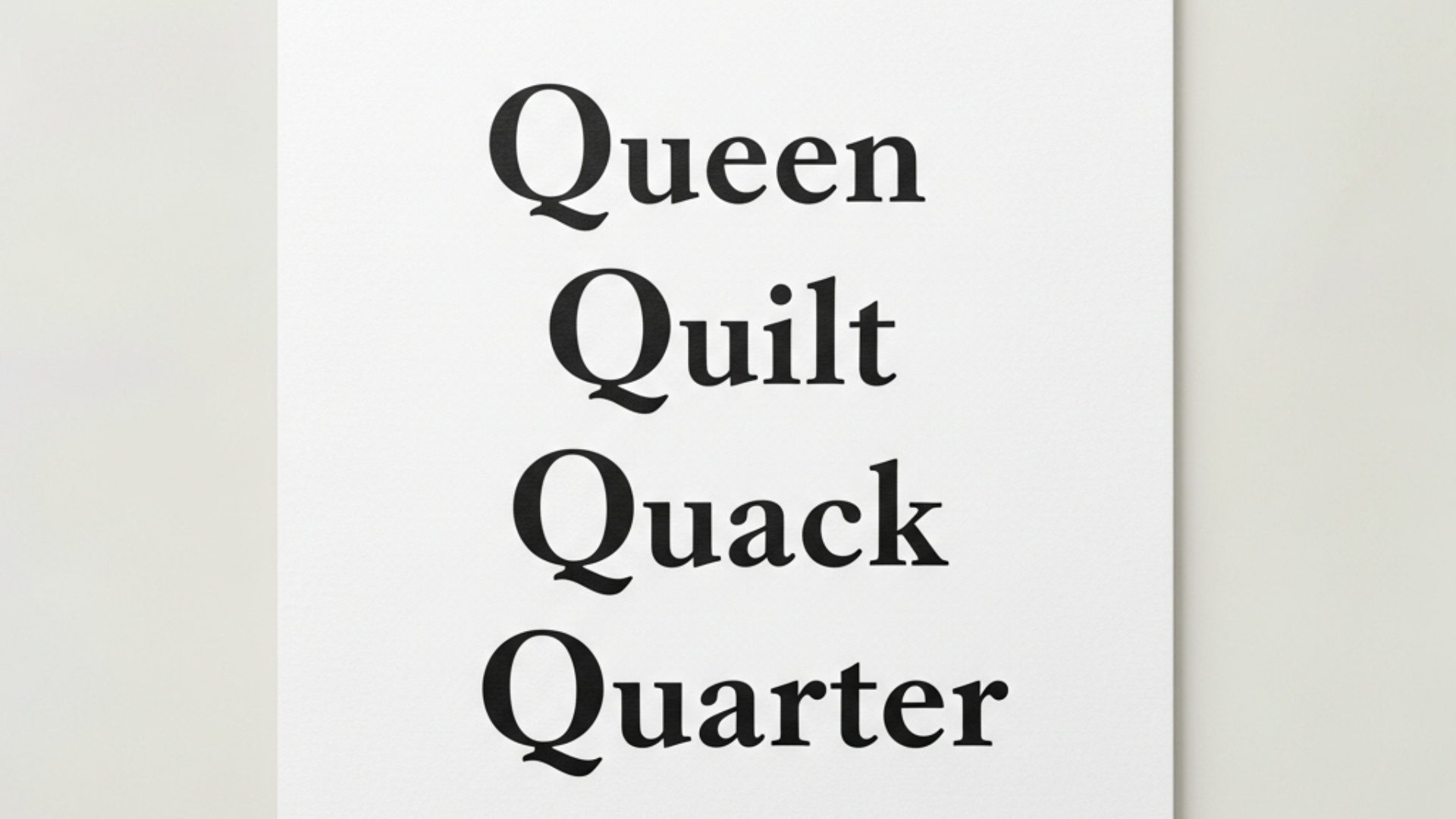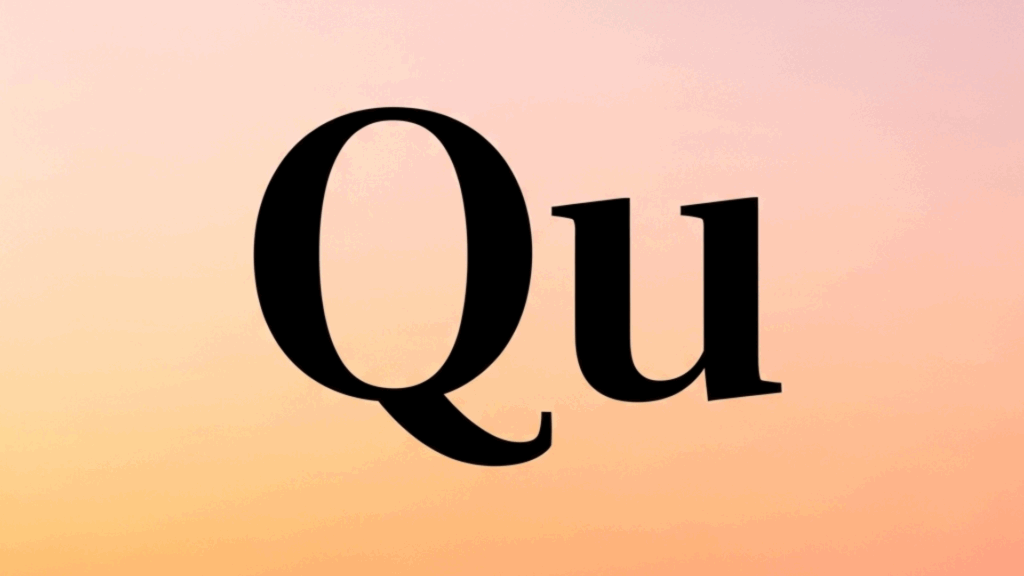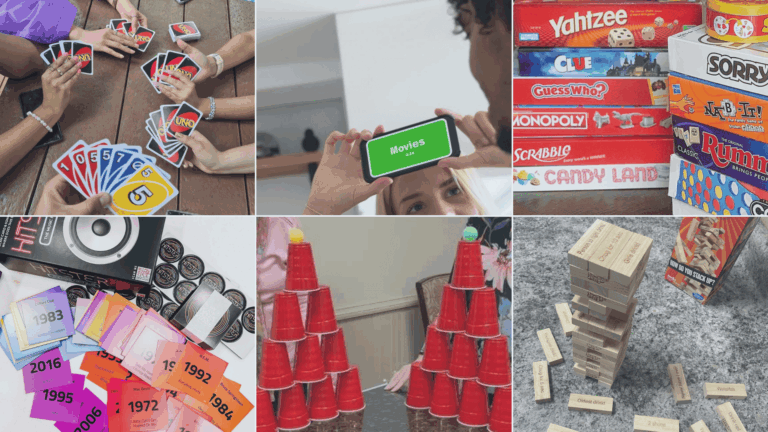Many parents and teachers encounter confusion when teaching phonics rules to children.
Letter combinations can be particularly puzzling, and the question “is qu a digraph?” frequently arises during reading instruction. This creates uncertainty about how to properly categorize and teach this important letter pair.
This blog will provide clear answers about qu’s role in phonics and explain its function in reading development.
Is Qu a Digraph or a Blend?

The classification of qu has sparked debate among phonics educators and linguists. Some view it as a digraph, while others classify it as a consonant blend.
Most phonics programs treat qu as a digraph for instructional purposes. When students wonder “is qu a digraph,” teachers typically explain it using digraph rules because this approach simplifies learning.
The classification matters less than helping children recognize qu as a consistent sound pattern.
Educational research supports teaching qu as a single unit rather than breaking it into separate sounds, especially for beginning readers.
Decoding the Role of Qu in Phonics
Phonics instruction becomes more effective when teachers understand different classification approaches.
Understanding both perspectives helps teachers make informed decisions about instruction methods. This knowledge allows educators to choose strategies that match their students’ learning needs and reading development levels.
Qu Functions as a Digraph:
- The letters q and u work together to create one unified /kw/ sound
- Students cannot separate the sounds when pronouncing words like “queen” or “quilt.”
- It behaves similarly to other digraphs, such as “ch” and “the”, that form single phonetic units
- The letter q rarely appears without u in English, creating a permanent partnership
Qu Functions as a Blend:
- Some linguists argue that qu contains two distinct sounds: /k/ and /w/
- Advanced phonetic analysis can break down the /kw/ sound into separate components
- Students can hear both the hard /k/ and the /w/ glide when speaking slowly
- It follows patterns similar to other consonant blends like “tw” in “twist.”
To gain a better understanding of this topic, readers may refer to the examples that include “qu.”
| “Qu” Words as Digraph | “Qu” Sound Words as Blend |
|---|---|
| Queen | Squat |
| Quick | Squirm |
| Quiet | Squeeze |
| Quiz | Squash |
| Quill | Squabble |
| Quote | Squint |
What are the Different Types of Digraphs?
Digraphs come in several varieties based on their composition and sound patterns.
Teachers categorize these letter combinations to help students recognize different phonetic structures. Understanding these types of digraphs support effective reading instruction.
- Consonant Digraphs: Two consonants create one sound, like “wh” in whale, “ck” in black, and “ng” in sing.
- Vowel Digraphs: Two vowels produce one vowel sound, such as “ee” in tree, “oo” in moon, and “ie” in pie. The first vowel typically dominates while the second remains silent.
- Split Digraphs: A vowel and a silent letter work together across one consonant, like “u_e” in tube, “e_e” in these, and “a_e” in grape. The silent letter changes the vowel from a short to a long sound.
- Homogeneous Digraphs: Identical letters double up to modify pronunciation, such as “rr” in berry, “dd” in ladder, and “tt” in butter. These combinations often follow short vowel sounds in single-syllable words.
- Heterogeneous Digraphs: Different letters combine for unique sounds, like “kn” in knee, “wr” in write, and “gn” in sign. One letter typically stays silent while the other produces the actual sound.
Difference Between a Digraph and a Blend
| Aspect | Digraph | Blend |
|---|---|---|
| Letter Relationship | Two letters form a completely new sound together | Each letter keeps its original sound while working with others |
| Pronunciation Method | Cannot split the sound without losing meaning | Can hear individual letter sounds when spoken slowly |
| Visual Teaching Strategy | Students learn to see letter pairs as single units | Students identify each letter separately before combining |
| Common Examples | “ph” in phone, “ck” in duck, “ng” in ring | “st” in stop, “fl” in flag, “br” in bread |
| Learning Progression | Taught after students master individual letter sounds | Introduced alongside single-consonant recognition |
Key Digraph Examples You Should Know
In early reading instruction, digraphs form a critical part of helping children decode words efficiently. These letter pairs represent single sounds, making it easier to grasp spelling patterns and pronunciation.
By recognizing digraphs, learners build a stronger connection between letters and the sounds they produce.
Common Consonant Digraph Words

These digraphs are often introduced early in reading lessons and appear in many simple words. Each letter pair forms one clear sound that helps learners read and spell more confidently.
1. ch – chip, cheese, chair, chain, child
2. sh – ship, shoe, sheep, shell, shop
3. th – thin, thick, thumb, thorn, thunder
4. wh – what, when, where, whale, wheel
5. ph – phone, photo, graph, phrase, phonics
6. ck – back, duck, neck, rock, sack
7. gh – ghost, laugh, cough, rough, tough
8. ng – ring, song, long, king, strong
9. kn – knife, knot, know, knee, knock
10. wr – write, wrong, wrist, wreck, wrap
11. qu – queen, quick, quilt, quiz, quack
12. sc – scale, scarf, school, scoop, score
13. sk – skate, skill, skip, skull, sky
14. sl – slam, sleep, slide, slip, slow
15. sm – small, smart, smile, smoke, smooth
16. sn – snack, snail, snake, sneeze, snow
17. sp – space, span, spark, speak, spin
18. st – stamp, star, stay, stick, stop
19. sw – swim, swing, switch, sword, sweet
20. tr – track, trail, train, trap, tree
21. tw – twin, twist, twelve, twenty, twirl
22. dw – dwell, dwarf, dwell, dwindle, dwelt
23. fr – frame, free, fresh, frog, fruit
24. gr – grab, grade, grain, grass, grow
25. pr – pray, press, price, pride, print
26. br – brave, bread, break, brick, bring
27. dr – drag, draw, dream, dress, drip
28. cr – crab, crack, crash, creep, cross
29. cl – clam, clap, class, clean, clock
30. fl – flag, flame, flash, flat, flip
31. gl – glad, glass, glide, globe, glow
32. pl – place, plan, plant, play, plum
33. bl – black, blade, blame, blank, blend
35. shr – shred, shrimp, shrine, shrink, shrub
36. squ – square, squash, squeak, squid, squirm
37. spl – splash, spleen, split, spoil, sponge
38. spr – spray, spread, spring, sprout, sprint
39. str – strap, stream, street, string, strong
40. scr – scrap, scream, screen, screw, scrub
41. sch – school, scheme, scholar, schedule, schism
42. gn – gnaw, gnome, gnash, gnat, gnome
43. mb – comb, lamb, thumb, climb, tomb
44. rh – rhyme, rhino, rhythm, rhubarb, rhetoric
45. ps – psalm, pseudo, psychology, psyche, pterodactyl
46. pt – pterodactyl, ptarmigan, pterosaur, ptolemy, ptosis
Vowel and Mixed Digraph Words

These digraphs influence how vowels sound within words and often appear in syllable patterns. They help learners recognize and pronounce a wide range of word forms.
47. ai – rain, train, paint, snail, wait
48. ea – beach, teach, reach, peach, each
49. ee – tree, see, bee, free, green
50. oa – boat, coat, goat, road, soap
51. oo – moon, spoon, room, broom, soon
52. ou – out, shout, cloud, loud, round
53. ow – cow, now, how, brown, town
54. au – author, autumn, cause, pause, sauce
55. aw – saw, draw, law, claw, straw
56. oi – coin, join, point, boil, soil
57. oy – boy, toy, joy, enjoy, annoy
58. ue – blue, clue, true, glue, due
59. ew – new, few, chew, grew, flew
60. ui – fruit, suit, juice, cruise, bruise
61. ie – pie, tie, die, lie, cried
62. ei – ceiling, receive, deceit, conceit, perceive
63. ar – car, star, far, jar, bar
64. er – her, fern, term, verb, serve
65. ir – bird, girl, shirt, skirt, third
66. or – for, corn, storm, short, sport
67. ur – fur, burn, turn, curl, hurt
Here’s a comprehensive list that highlights essential digraphs used in everyday words and phonics lessons.
Click here to download the free PDF of digraph words
The Bottom Line
Clear phonetic knowledge empowers effective reading instruction across all educational levels.
Teachers who understand letter combinations can address student questions with confidence and accuracy.
The debate over whether “is qu a digraph” matters less than consistent classroom application. Students benefit when educators present phonics concepts systematically, regardless of technical classifications.
This foundational understanding supports literacy development and helps children decode words successfully throughout their reading experience.


















